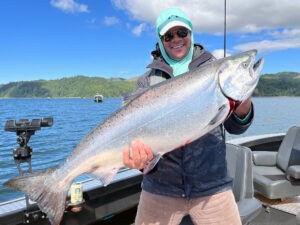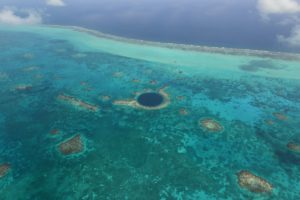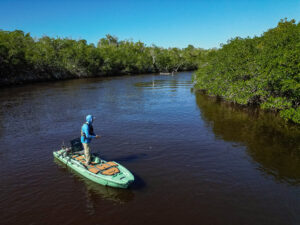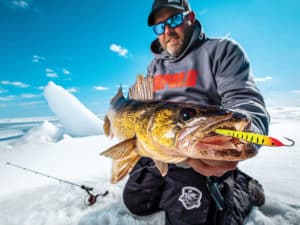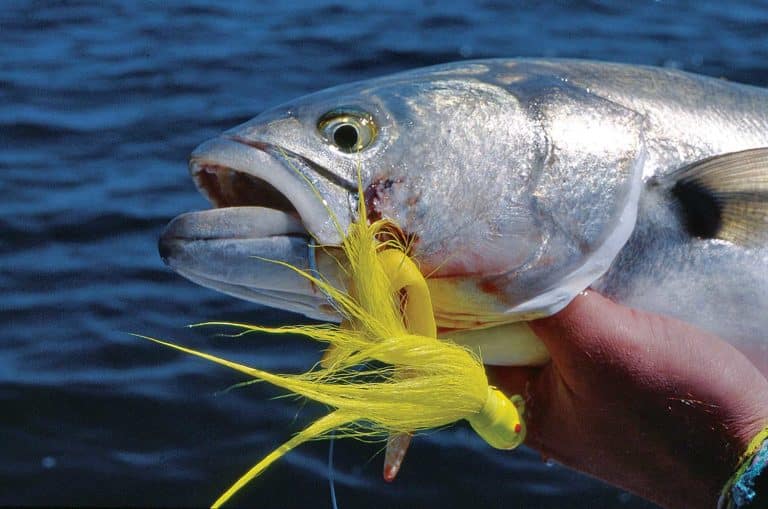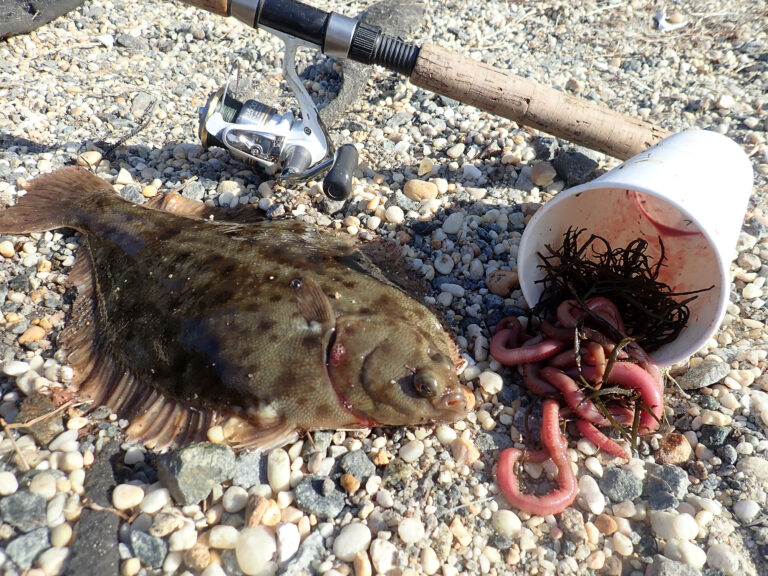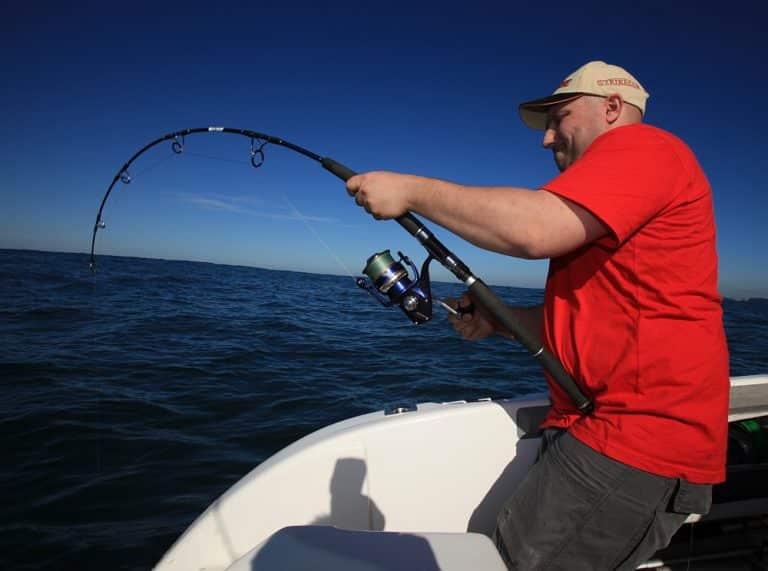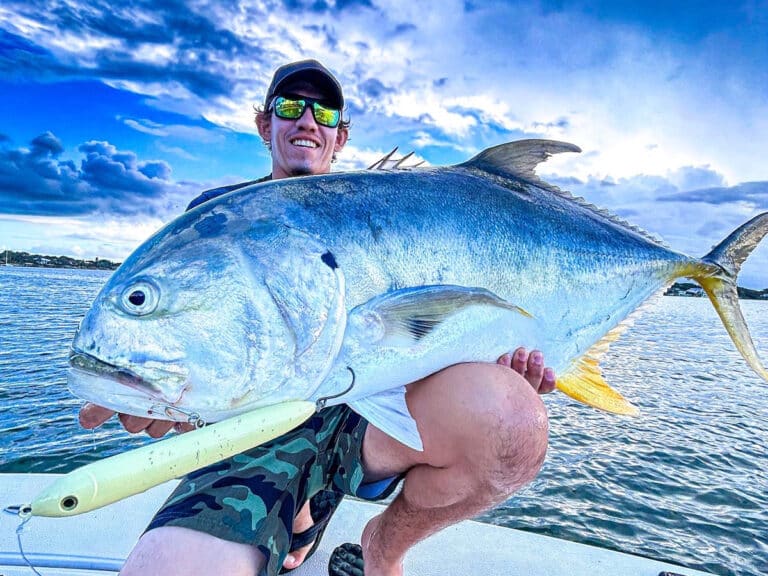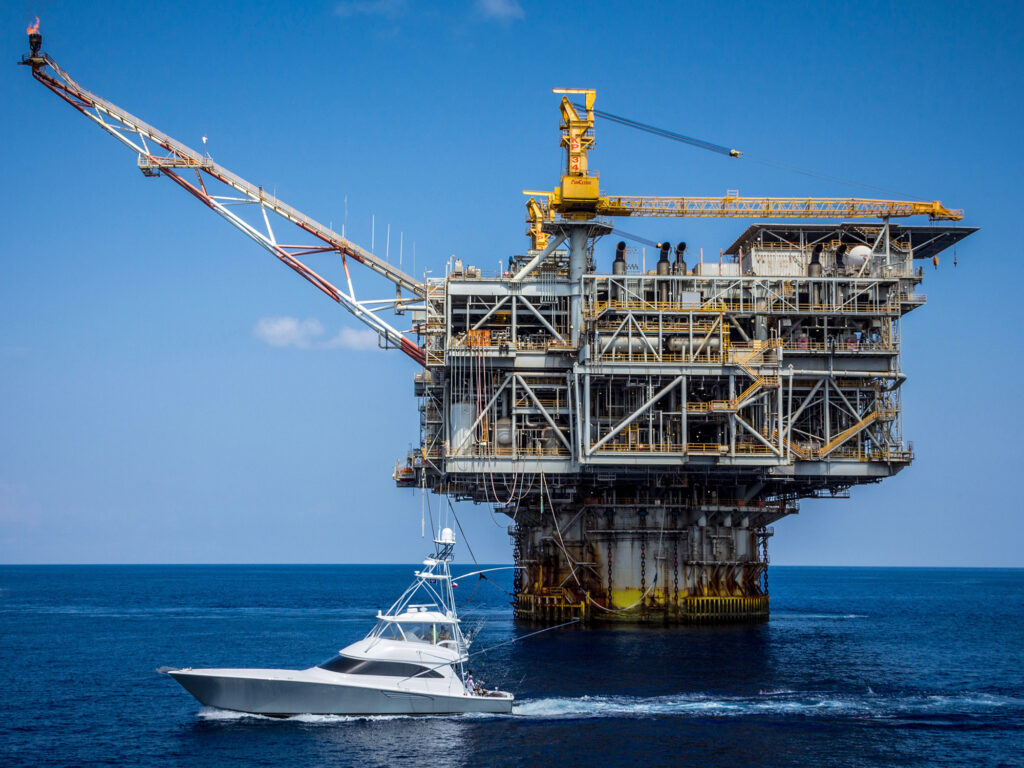
It’s a long way offshore to the Texas rigs, but those who make the trip put up very respectable numbers of blue marlin and yellowfin for the Gulf of Mexico. Consider the results of last summer’s Texas Gulf Coast Billfish Classic. In the tournament’s first year, teams caught 14 blue marlin in three fishing days. The biggest blue, landed by team Synchronicity, weighed 726.3 pounds.
“The marlin seem to move off the Panhandle during the summer and come here,” says Texas offshore legend Dee Wallace, who is the tournament director at Fisherman’s Wharf in Port Aransas. “In late summer, the Domes reef area and the Colt 45 reef come alive with white marlin, sailfish and blue marlin. It’s just a little farther run than other places.”
That is to say, Texas blue marlin fishing isn’t like Tongue-of-the-Ocean in the Bahamas, where you duck out in the morning for the day and get back in the afternoon for drinks at the cabana, nor even like Venice, Louisiana, where pre-dawn departures get you back that night. No, in Texas, boats might leave on a Thursday and return two days later.
“You can cover three or four of the deep rigs in a long one-day trip, but most people go out for a couple of days,” says Wallace. “It’s Iron Man stuff.”
Runs into the Gulf might be 100, 250, 300 miles or more, targeting promising oceanic set-ups at oil rigs, floating platforms and drill ships that act as fish aggregating devices (FADs). It is a high-stakes, boom-or-bust sport, with plenty of tournaments in the summer for those who want to compete for big money. The Texas Gulf Coast Billfish Classic is one of the newest.
“Up and down the Texas coast, a lot of people keep their boats at their own docks,” says Robbie Carter, director of the Texas Gulf Coast Billfish Classic. “We wanted to have a tournament that lets them leave from their docks, wherever their homes are. They go out to the rigs at the tournament’s start Thursday morning and don’t have to return until Saturday afternoon. It’s a marathon. This year we’ll have two weigh-in locations, Surfside and Port Aransas. There’s catch-and-release divisions, too, and we use Starlink for live scoring by video and updates.” After a delay from Hurricane Beryl, this year’s Texas Gulf Coast Billfish Classic is set for Aug. 15-17. Other upcoming tournaments include the Texas International Fishing Tournament (July 31- Aug. 4 at Port Isabel) and the Texas Legends Billfish Tournament (Aug. 7-11 at Port Aransas).
Technology has Changed Marlin Fishing
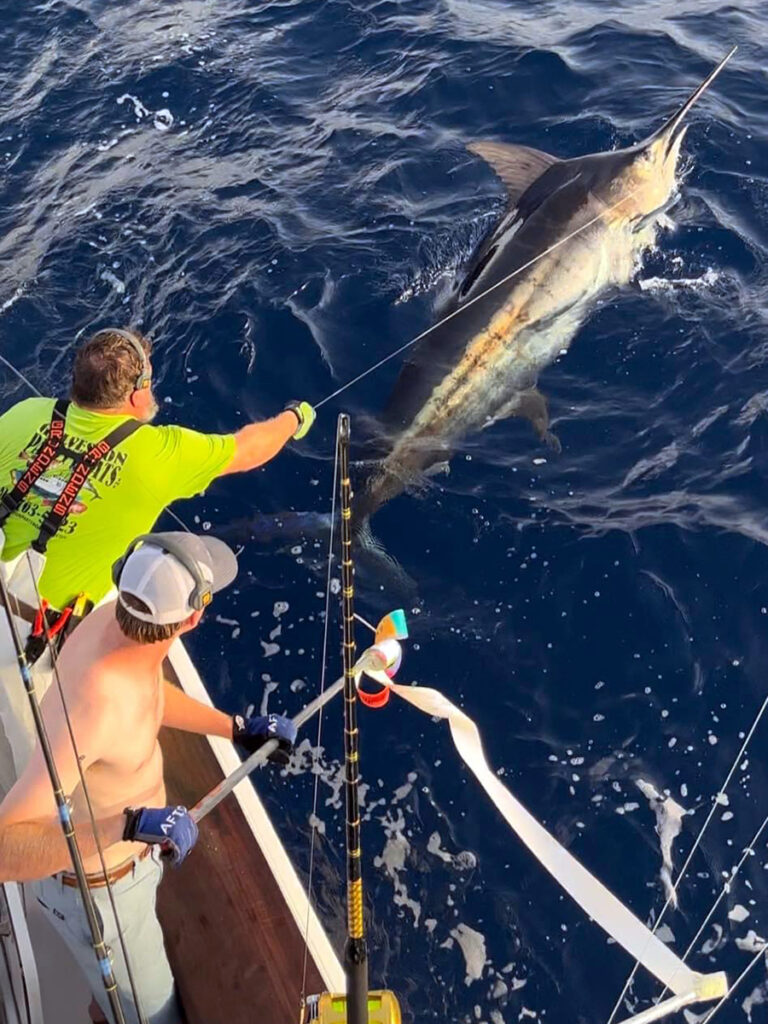
“The days of pointing your bow offshore looking for rips and slicks are over,” says Tom Hilton, owner of Hilton’s, the fishing charts and services company. “Now, with these deep-water rigs all within range of sport fishers, and with the technology, these fishermen are checking all their charts and understanding not only where to go fish, but just as importantly, where not to go fish. The key to using charts is to find the area where you have the most overlapping favorable conditions.
“Seakeeper, omni sonar, Starlink, and what I’ve designed with Sat2Nav with our charts and also with Roff’s, all of it has changed how people fish,” Hilton continues. “Also, the introduction of more deepwater floating platforms, known as SPARs (single point anchor reservoir), has increased offshore destinations. Also, live baiting with small tunas and rainbow runners has radically changed strategies. People still pull plastic, but live baits are bringing in a lot of big marlin.”
More Texas Deepwater FADs Coming Soon
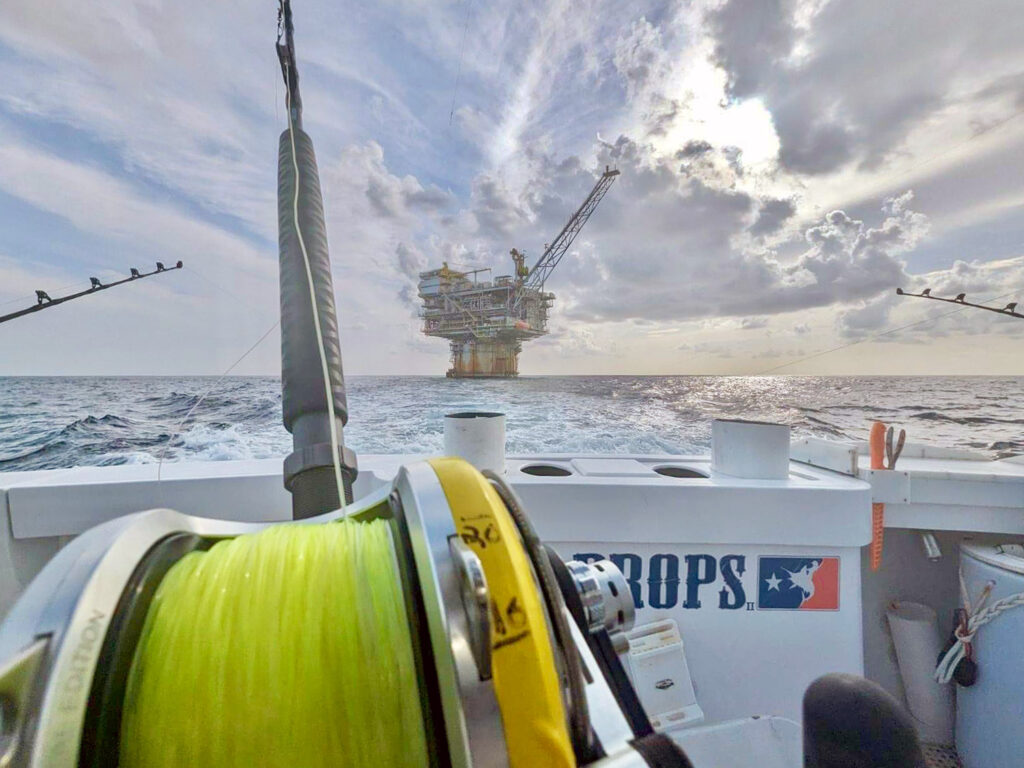
Because it is so far offshore, Texas billfishing and tuna fishing might not be as well known as other Gulf locations out of Florida’s Panhandle, Venice, and Biloxi, Mississippi, but that may soon change. Tom Hilton and his colleagues have been organizing deployment of fish aggregating devices (FADs), and Hilton says he’s close to getting approval for installation, which would change Texas offshore fishing entirely.
“Alex Fogg of Okaloosa County in Florida worked hard to install deep water FADs off the Panhandle, and it’s been a resounding success,” Hilton says. “Those were the first ‘legal’ FADs ever deployed in U.S. waters. There’s white marlin, blue marlin, sailfish, and all kinds of species are attracted to those FADs.”
Hilton has 14 FADs ready for deployment from 60 to 80 miles offshore in waters 1,100 to 1,600 feet deep. The project is a collaboration between Hilton Marine, the Houston Big Game Fishing Club and the Gulf Research Institute for Highly Migratory Species.
“These FADS would bring bluewater fishing in range to a lot more center consoles and charter boats off the Texas coast, among other benefits,” Hilton says. “Right now, we’re mired in red tape, but it’s going to be big once we get them out there.”
Another Option is Texas Inshore Fishing
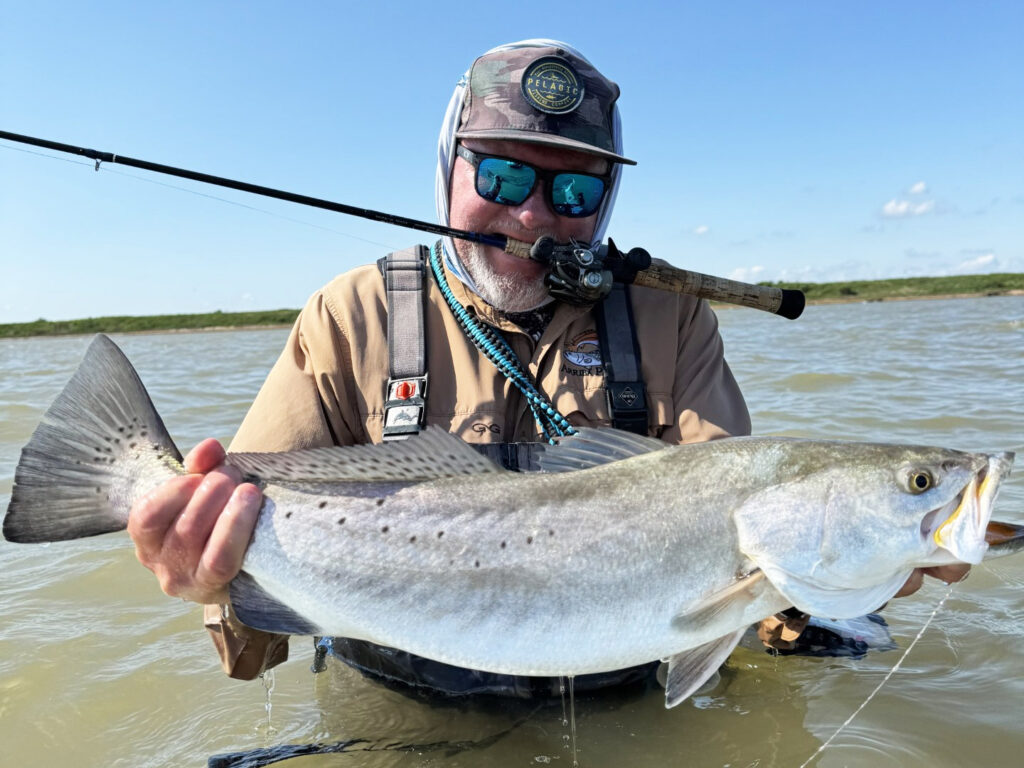
For those not quite suited to the rarified air of Texas oil rig fishing, either by temperament or finances, Texas fortunately has a rich estuary system with vast and varied options for beach, bay and backcountry fishing. Major bay systems include the Laguna Madre in the south, Matagorda Bay on the central coast, and Galveston Bay south of Houston. Smaller bays like Aransas Bay and Corpus Christi Bay add more wading and boating locations. On the ocean side, beaches, piers and jetties see clean, green water in summer, with redfish, Spanish mackerel, flounder and seatrout along the shores and surf.
Capt. Charlie Paradoski has fished the Texas bay system for close to 50 years, focusing on Matagorda Bay for the last three decades, both by wade fishing and boat. Matagorda Bay covers more than 350 square miles, so there’s a lot of fishy structure to get to know. Among other species, West Matagorda Bay is known for summer tripletail fishing. Paradoski also takes to the beaches when the surf is right, and there’s nothing more beautiful than sunrise over a big Texas beach.
“People like to come down and catch seatrout, and the slot limit is now between 15 and 20 inches, but most of the fish we catch are over 20 inches,” Paradoski says. “The bag limit is three trout, and as much as people don’t like that lower limit, it’s a good thing for the resource and the future to ensure good fishing.”
As good as the fishing in summer can be, it’s even better when the water cools. “October through February, that’s when the fishing gets easy,” he says. “Redfish, flounder, seatrout, they love that cooler water.” Texas coastal fishing is nearly endless, consistently productive and highly accessible. Vehicles can even be driven onto some beaches, like part of Matagorda Beach. Waders and kayak anglers can drop into stunning sight fishing with ease. Perhaps best of all, many locations along the coast still feel as if they belong to the wild. That’s a privilege worth preserving, and Texas anglers know it.


